 W
WThe chicken or the egg causality dilemma is commonly stated as the question, "which came first: the chicken or the egg?" The dilemma stems from the observation that all chickens hatch from eggs and all chicken eggs are laid by chickens. "Chicken-and-egg" is a metaphoric adjective describing situations where it is not clear which of two events should be considered the cause and which should be considered the effect, to express a scenario of infinite regress, or to express the difficulty of sequencing actions where each seems to depend on others being done first. Plutarch posed the question as a philosophical matter in his essay "The Symposiacs", written in the 1st century CE.
 W
WA "curate's egg" is something described as partly bad and partly good. In its original usage, it referred to something that is obviously and entirely bad, but is described out of politeness as nonetheless having good features that redeem it. This meaning has been largely supplanted by its less ironic modern usage, which refers to something that is in fact an indeterminate mix of good and bad, possibly with a preponderance of bad qualities.
 W
WThe Dalí Theatre and Museum, is a museum dedicated to the artist Salvador Dalí in his home town of Figueres, in Catalonia, Spain. Salvador Dalí is buried in a crypt below the stage. The museum received 1,368,755 visitors in 2016.
 W
WEaster eggs, also called Paschal eggs, and Egg of Easter are eggs that are sometimes decorated. They are usually used as gifts on the occasion of Easter. As such, Easter eggs are common during the season of Eastertide. The oldest tradition is to use dyed and painted chicken eggs, but a modern custom is to substitute chocolate eggs wrapped in coloured foil, hand-carved wooden eggs, or plastic eggs filled with confectionery such as chocolate. However, real eggs continue to be used in Central and Eastern European tradition.
 W
WAn egg-and-spoon race is a sporting event in which participants must balance an egg or similarly shaped item upon a spoon and race with it to the finishing line. At many primary schools an egg-and-spoon race is staged as part of the annual Sports Day, alongside other events such as the sack race and the three-legged race.
 W
WEgg balancing is a traditional Chinese practice that has since been popularized in the United States. Although the irregular shape of eggs makes this somewhat difficult, eggshells typically have many imperfections such that the vast majority can be balanced on their broad ends with minimal effort. Despite folklore connecting this practice to the lunar new year in China, the Dragon Boat Festival in Taiwan and the vernal equinox in the United States, egg balancing can be done throughout the year and has no connection to the gravitational force of the moon or sun.
 W
WAn egg is the organic vessel containing the zygote in which an embryo develops until it can survive on its own, at which point the animal hatches. An egg results from fertilization of an egg cell. Most arthropods, vertebrates, and mollusks lay eggs, although some, such as scorpions, do not.
 W
WAn egg dance is a traditional Easter game in which eggs are laid on the ground or floor and the goal is to dance among them damaging as few as possible. The egg was a symbol of the rebirth of the earth in Pagan celebrations of spring and was adopted by early Christians as a symbol of the rebirth of man at Easter.
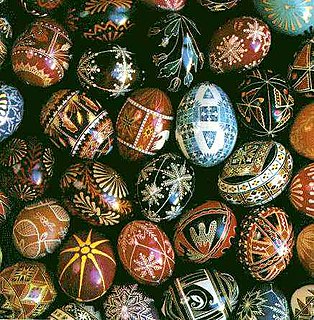 W
WEgg decorating is the art or craft of decorating eggs. It has been a popular art form throughout history because of the attractive, smooth, oval shape of the egg, and the ancient associations with eggs as a religious and cultural symbol. Egg decorating has been associated with Easter in recent times, but was practiced independently by many ancient cultures.
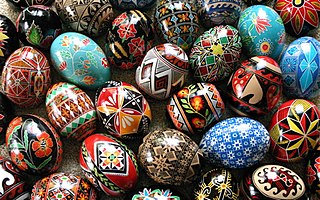 W
WThe tradition of egg decoration in Slavic cultures originated in pagan times, and was transformed by the process of religious syncretism into the Christian Easter egg. Nevertheless, these decorated eggs have retained much of their pagan symbolism.
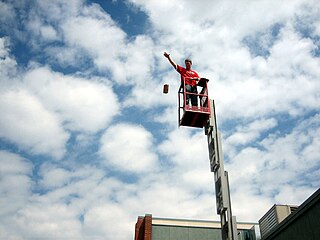 W
WThe egg drop contest is an experiment usually performed by college or primary school students. Competitors typically attempt to create a device that can keep a raw chicken egg intact when dropped from a height. Students are asked to build a device made from a limited or unlimited amount of materials to support an egg when dropped from various heights.
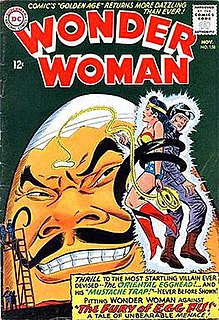 W
WEgg Fu is a fictional character appearing in DC Comics publications and related media, commonly as an adversary of the superhero Wonder Woman. Most frequently represented as an enormous sentient egg, he was created by Robert Kanigher and Ross Andru in Wonder Woman, vol. 1, issue #157. Over the years, multiple versions of the character have appeared with varying backstories and alternative names to battle not only Wonder Woman, but also the Metal Men, Checkmate and Harley Quinn.
 W
WAn egg of Columbus or Columbus' egg refers to a brilliant idea or discovery that seems simple or easy after the fact. The expression refers to an apocryphal story, dating from at least the 15th century, in which it is said that Christopher Columbus, having been told that finding a new trade route was inevitable and no great accomplishment, challenges his critics to make an egg stand on its tip. After his challengers give up, Columbus does it himself by tapping the egg on the table to flatten its tip.
 W
WEgg oil, also known as egg yolk oil or ovum oil, is derived from the yolk of chicken eggs consisting mainly of triglycerides with traces of lecithin, cholesterol, biotin, xanthophylls lutein & zeaxanthin, and immunoglobulins. It is free of egg proteins and hence may be used safely by people who are allergic to eggs, for topical applications such as hair and skin care. The product has several historical references in Unani (Greek) medicine for hair care. Traditional Chinese medicine uses egg oil for burns, eczema, dermatitis, mouth ulcers, skin ulcers, chapped nipples, tinea capitis, ringworm, nasal vestibulitis, frostbite, and hemorrhoids.
 W
WEgg rolling, or an Easter egg roll is a traditional game played with chocolate eggs at Easter. Different nations have different versions of the game, usually played with hard-boiled, decorated eggs.
 W
WEgg shoeing is an egg decorating technique. According to Hungarian oral traditions, egg shoeing was invented by village blacksmiths to prove their skills by creating an egg which was shod by miniature horseshoes. This technique is currently in decline due to the decreasing number of blacksmiths; it is mainly practiced in arts and crafts workshops, fairs and in the Szentendre open-air museum.
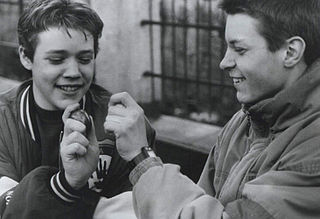 W
WEgg tapping, or also known as egg fight, egg knocking, egg pacqueing, egg boxing, egg picking, egg chucking, or egg jarping is a traditional Easter game. In English folk traditions, the game has variously been known as "shackling", "jarping" or "dumping".
 W
WEgg tossing or egg throwing is a game associated with Easter. Various types of such games exist, common ones involve throwing an egg so that it lands on the ground without breaking. Such a contest may be known as an egg toss.
 W
WEgghead is a fictional character created for the 1960s Batman television series. Played by horror film mainstay Vincent Price, the character was identifiable by his pale bald head and white and yellow suit. He believes himself to be "the world's smartest criminal", and his crimes usually have an egg motif to them; he also includes egg-related puns in his speech. Additionally, he would use a wide assortment of egg-shaped weapons, such as laughing gas eggs and tear gas eggs.
 W
WEgging is the act of throwing eggs at people or property. The eggs are usually raw, but can be hard-boiled or rotten.
 W
WEggnog, historically also known as a milk punch or an egg milk punch when alcoholic beverages are added, is a rich, chilled, sweetened, dairy-based beverage. It is traditionally made with milk, cream, sugar, whipped egg whites, and egg yolks. In some contexts, distilled spirits such as brandy, rum, whisky or bourbon are added to the drink.
 W
WElective Affinities is a 1933 painting by the Belgian surrealist René Magritte. The title is taken from Johann Wolfgang von Goethe's 1809 novel Elective Affinities.
 W
W"The Goose that Laid the Golden Eggs" is one of Aesop's Fables, numbered 87 in the Perry Index, a story that also has a number of Eastern analogues. Many other stories contain geese that lay golden eggs, though certain versions change them for hens or other birds that lay golden eggs. The tale has given rise to the idiom 'killing the goose that lays the golden eggs', which refers to the short-sighted destruction of a valuable resource, or to an unprofitable action motivated by greed.
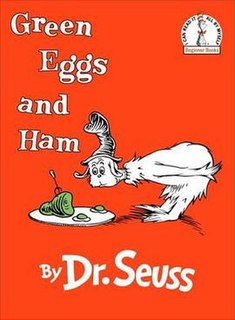 W
WGreen Eggs and Ham is a children's book by Dr. Seuss, first published on August 12, 1960. As of 2019, the book has sold 8 million copies worldwide. The story has appeared in several adaptations, starting with 1973's Dr. Seuss on the Loose starring Paul Winchell as the voice of both Sam-I-Am and the first-person narrator, Guy-Am-I, and more recently an animated TV series of the same name on Netflix.
 W
WHumpty Dumpty is a character in an English nursery rhyme, probably originally a riddle and one of the best known in the English-speaking world. He is typically portrayed as an anthropomorphic egg, though he is not explicitly described as such. The first recorded versions of the rhyme date from late eighteenth-century England and the tune from 1870 in James William Elliott's National Nursery Rhymes and Nursery Songs. Its origins are obscure, and several theories have been advanced to suggest original meanings.
 W
WAn egg hunt is an Eastertide game during which decorated eggs or Easter eggs are hidden for children to find. Real hard-boiled eggs, which are typically dyed or painted, artificial eggs made of plastic filled with chocolate or candies, or foil-wrapped egg-shaped chocolates of various sizes are hidden in various places; as many people give up sweets as their Lenten sacrifice, individuals consume them after having abstained from them during the preceding forty days of Lent.
 W
WThe Instagram egg is a photo of an egg posted by the account @world_record_egg on the social media platform Instagram, notable for becoming a global phenomenon and an internet meme within days of its creation. It has over 55 million likes, making it both the most-liked Instagram post and most liked online post on any website in history. The owner of the account was revealed to be Chris Godfrey, an advertising creative, who later worked with his two friends Alissa Khan-Whelan and CJ Brown on a Hulu commercial featuring the egg, intended to raise awareness of mental health.
 W
WKalti paarti carving is an art form made by carving a kalthi-parti, or emu egg. The practice began in the mid to late nineteenth century and while it has been practiced by people in Australia from many backgrounds, it is often strongly associated with Aboriginal art.
 W
W"Kill the Moon" is the seventh episode of the eighth series of the British science fiction television programme Doctor Who. It was first broadcast on BBC One on 4 October 2014. The episode was written by Peter Harness and directed by Paul Wilmshurst.
 W
WL'eggs is a brand of pantyhose, introduced in 1969 by Hanes, which radically changed the hosiery marketplace. The novel developments were the egg-shaped plastic product container, the shift to consignment sales in drug stores and groceries, and the in-store product racks designed to emphasize the egg shape. The brand logo hinted at a pair of chicks or eggs in the lettering.
 W
WThe egg of the ostrich is the largest of any living bird. The shell has a long history of use by humans as a container and for decorative artwork. The eggs are not commonly eaten.
 W
WOvo vegetarianism is a type of vegetarianism which allows for the consumption of eggs but not dairy products, in contrast with lacto vegetarianism. Those who practice ovo vegetarianism are called ovo-vegetarians. "Ovo" comes from the Latin word for egg.
 W
WThe Pace Egg plays are an Easter custom in rural Northern England in the tradition of the medieval mystery plays. The practice was once common throughout Northern England, but largely died out in the nineteenth century before being revived in some areas of Lancashire and West Yorkshire in the twentieth century. The plays, which involved mock combat, were performed by Pace Eggers, who sometimes received gifts of decorated eggs from villagers. Several closely related folk songs were associated with Pace Egging.
 W
WPisanica is a decorated Croatian Easter egg that comes from an old Slavic custom dating back to pagan times. During Easter, eggs would be painted with bright colors, and would be given as gifts, especially to young children or a significant other. Before paint became common, villagers would have to use whatever resources they had available around them to make the dyes and paints themselves. The most common color for eggs was red, due to the abundance of red beets and other vegetables. In the Međimurje area, soot would often be mixed with oak to make a dark brown color. Green plants would be used for green dye. The word pisanica is derived from the Croatian word that means "writing." The most common phrase put on pisanicas is Happy Easter, or "Sretan Uskrs." Other common decorations are doves, crosses, flowers, traditional designs, and other slogans wishing health and happiness.
 W
WPolish pisanka or jaja wielkanocne ; piski, kraszonki is a common name for an egg richly ornamented using various techniques. The word pisanka is derived from the verb 'pisać' which in contemporary Polish means exclusively 'to write' yet in old Polish meant also 'to paint'. Originating as a pagan tradition, pisanki were absorbed by Christianity to become the traditional Easter egg. Pisanki are now considered to symbolise the revival of nature and the hope that Christians gain from faith in the resurrection of Jesus Christ.
 W
WA pysanka is a Ukrainian Easter egg, decorated with traditional Ukrainian folk designs using a wax-resist method. The word pysanka comes from the verb pysaty, "to write" or "to inscribe", as the designs are not painted on, but written (inscribed) with beeswax.
 W
WThe current Pysanka Museum building was built in 2000 in the western Ukrainian city of Kolomyia, Ivano-Frankivska Oblast. Previously the pysanka collection had been housed in the Kolomyia church of the Annunciation. The museum is part of the National Museum of Hutsulshchyna and Pokuttya Folk Art.
 W
WScrambled Eggs Super! is a 1953 book by American children's author Dr. Seuss. The story is told from the point of view of a boy named Peter T. Hooper, who makes scrambled eggs prepared from eggs belonging to various exotic birds.
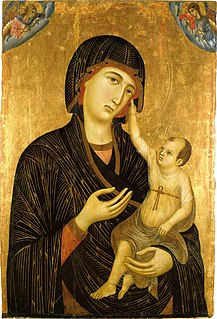 W
WTempera, also known as egg tempera, is a permanent, fast-drying painting medium consisting of colored pigments mixed with a water-soluble binder medium, usually glutinous material such as egg yolk. Tempera also refers to the paintings done in this medium. Tempera paintings are very long-lasting, and examples from the first century AD still exist. Egg tempera was a primary method of painting until after 1500 when it was superseded by the invention of oil painting. A paint consisting of pigment and binder commonly used in the United States as poster paint is also often referred to as "tempera paint", although the binders in this paint are different from traditional tempera paint.
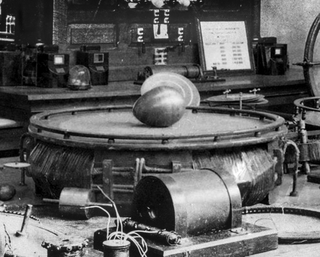 W
WTesla's Egg of Columbus was a device exhibited in the Westinghouse Electric display at the 1893 Chicago World's Columbian Exposition to explain the rotating magnetic field that drove the new alternating current induction motors designed by inventor Nikola Tesla by using that magnetic field to spin a copper egg on end.
 W
WTogepi is a Fairy-type Pokémon in Nintendo and Game Freak's Pokémon franchise. Prior to Generation VI, it was a Normal-type Pokémon. Created by Ken Sugimori, Togepi first appeared in the Pokémon anime, in which it became a major character for the first five seasons under the ownership of Misty. It then appeared in the video games Pokémon Gold and Silver and subsequent sequels, later appearing in various merchandise, spinoff titles, and animated and printed adaptations.
 W
WThe Vegreville egg is a giant sculpture of a pysanka, a Ukrainian-style Easter egg. The work by Paul Maxum Sembaliuk is built of an intricate set of two-dimensional anodized aluminum tiles in the shape of congruent equilateral triangles and star-shaped hexagons, fashioned over an aluminum framework. The egg is 31 ft (9 m) long and three and a half storeys high, weighing in at 2.5 t (5,512 lb). It is the second largest pysanka in the world.
 W
WThe world egg, cosmic egg or mundane egg is a mythological motif found in the cosmogonies of many cultures that is present in proto-Indo-European culture and other cultures and civilizations. Typically, the world egg is a beginning of some sort, and the universe or some primordial being comes into existence by "hatching" from the egg, sometimes lain on the primordial waters of the Earth.
 W
WThe World Egg Throwing Federation is an organization that promotes the sport of egg throwing. It promotes a number of different variations of games including Russian egg roulette, throw and catch, static relay, target throwing and egg trebuchet. The organization discourages the use of eggs in the role of vandalism. The championship has been held annually in Swaton, England since 2006.